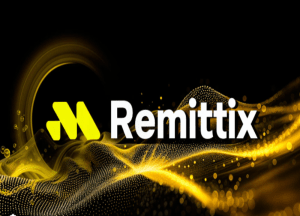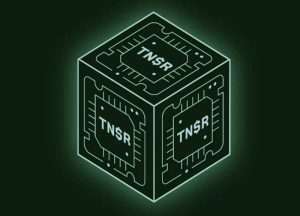Stablecoin Crash: Hedge Funds Short Tether, Regulation Is On the Way
In the first half of 2022, the crypto markets have been in a downward spiral. Many things have contributed to the downturn, but stablecoins are a significant one.
Markets in both cryptocurrencies and equities were already in a sell-off mode because of inflation, rising interest rates, and the war in Ukraine, even before TerraUSD stablecoin went down in May. As a result of the high-profile demise of TerraUSD, the economy was engulfed in flames. Since May, the overall cryptocurrency market capitalization has dropped from $1.7 trillion to $900 billion.
The crypto winter, according to experts, has arrived and might help screen out undesirable actors who arose during the bull run of the crypto market in 2021.Stablecoins, a cornerstone of crypto, have attracted some of the industry’s most egregious players. They serve as a bridge to more volatile crypto assets, making it easier for traders to get in and out. TerraUSD’s disastrous breakdown exposed the shortcomings of several stablecoins, notably so-called “algorithmic” stablecoins, in the market.
What Are Stablecoins and How Do They Work?
Stablecoins, as the name suggests, are an attempt to create a digital asset with a predictable value.
An asset’s value is used to determine the value of a stablecoin, such as the US dollar. The stablecoin’s value must remain anchored to the peg at all times.
With a dollar peg, a stablecoin’s value should remain constant, regardless of market fluctuations.
Currently the third-largest cryptocurrency by market cap, Tether (USDT) and its stablecoin USD Coin (USDC) are both tied to the US dollar. If you invest $10 in USDT today, you may anticipate it to be worth the same amount in a year.
Stablecoins Based on Algorithms Aren’t Stable at All
Unlike Tether or USD Coin, TerraUSD was a completely other animal. In this case, it was an algorithmic stablecoin that relied solely on the power of computer code to keep it stable.
Though the goal was to retain the worth of one dollar, TerraUSD planned to keep its sister coin, Luna, in and out of the market to keep its steady value.
Short-sellers could easily take advantage of this algorithm-driven system because it had no real-world assets to back it up. It’s possible that you’ve figured out how things could have gone so wrong so fast.
Atlatl Advisers managing director Ross Fedenia argues that in early May, after Terra lost its peg, “there was a rush to draw a line in the sand between algorithmic stablecoins and centralized stables (like USDT and USDC)”
As of May 9th, TerraUSD was no longer tied to the US dollar, but TerraClassicUSD can still be purchased (USTC). Co-founder of Terra Do Kwon offered a strategy to revive USTC on the Terra blockchain after the depeg. Stablecoins like USTC, on the other hand, are now worthless and trade for pennies on the dollar.
The Securities and Exchange Commission (SEC) of the United States is investigating Terra’s demise and whether federal investor protection requirements were violated during TerraUSD’s promotion.
Tether Is Being Shorted by Hedge Funds
The collapse of TerraUSD has brought attention to other stablecoins, most notably Tether. There has been a $15 billion drop in Tether’s market value since early May, according to CoinMarketCap.com’s data.
According to some critics, the Tether organization does not have enough assets to justify its current market value of $66 billion.
In a 12-part Twitter thread on June 27, Tether’s chief technology officer Paolo Ardoino said that hedge funds are looking to short the cryptocurrency. For months/years, truthers like Ardoino circulated misinformation about Tether, leading some investors to fear that it isn’t fully supported by the United States.
Hedge funds have become interested in shorting Tether as a result of the collapse of TerraUSD and other crypto companies.As Gritt Trakulhoon, Titan’s head crypto analyst, puts it: Tether’s lack of transparency on reserve has been an issue from its beginning. Terra, Celsius, and Three Arrows Capital’s failures have only served to amplify it recently.
According to Trakulhoonh, funds that are shorting Tether intend to magnify panic and raise pressure on the stablecoin in order to cause cascading outflows of money from investors. Short-sellers would be able to purchase back USDTs at a significantly cheaper price if Tether’s liquidity were hampered by this.
Due to the lack of audited reserves, these funds are betting against Tether. Tether, on the other hand, has nothing to fear if USDT is fully backed.By being open about where their reserves are being spent, Tether may be able to put an end to these attacks. As long as redemptions continue, public trust may continue to decline, according to Trakulhoon.
Collateralized stablecoins, according to Domain Money’s head of investment management Andrew Pesco, are the way of the future.Two months into the new year, stablecoins like USD Coin have established their worth. According to CoinMarketCap’s data, USDC’s market worth has increased by 12 percent since early May, reaching a total market value of $55 billion.
There is no denying that people are making the switch to USDC, Trakulhoon concludes.
Regulations for Stablecoins Are on the Way
Janet Yellen, the U.S. Treasury Secretary, has taken notice of TerraUSD’s demise and has begun discussing the prospect of stablecoin laws.
Stablecoin dangers, according to Yellen, require a regulatory framework.According to Alex McDougall, CEO of Stablecorp, “We’ve allowed ‘experiments’ like TerraUSD to dominate and develop substantially above where they naturally should sit given their intrinsic danger,” he argues.
A bipartisan measure titled the Responsible Financial Innovation Act was launched earlier this month by Sens. Kirsten Gillibrand (D-NY) and Cynthia Lummis (R-WY) to regulate “payment stablecoins.”
Fedenia claims the bill includes tax rules for various digital assets, as well as harsher standards for stablecoins, which would have barred the TerraUSD coin if Gillibrand had her way.Cybersecurity is also addressed in the law with provisions for the future establishment of a self-regulatory entity and transparency obligations.
It is the bill’s definition of cryptocurrency as commodities, rather than securities, that worries many skeptics, according to Fedenia. “Commodities are regulated by the Commodity Futures Trading Commission (CFTC), rather than the much larger Securities and Exchange Commission (SEC),” she says.The bill has been read twice and referred to the Senate Finance Committee, and it is not anticipated to be voted on until later in the year.










